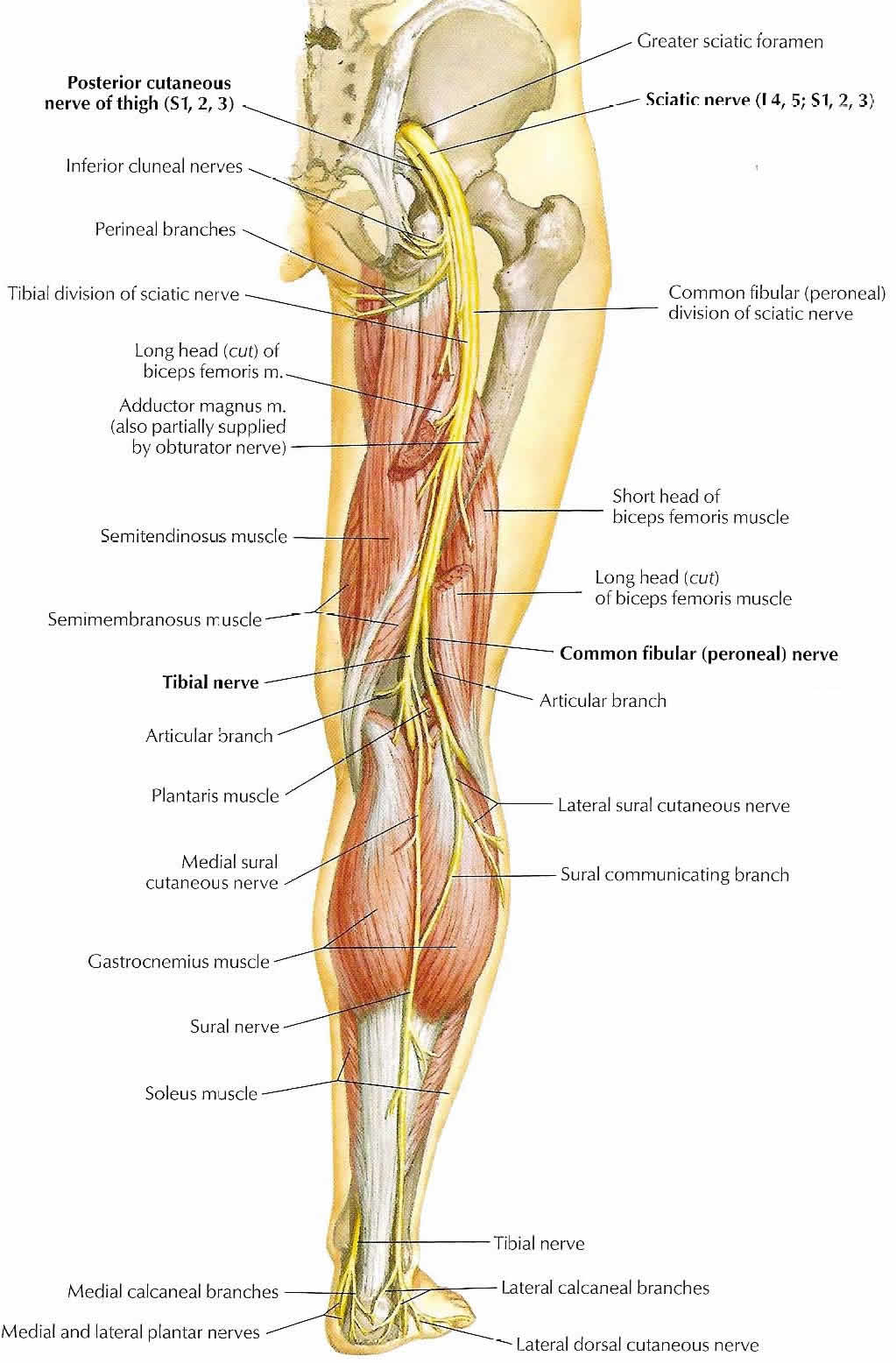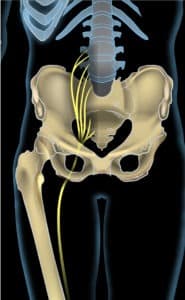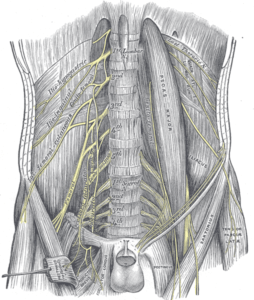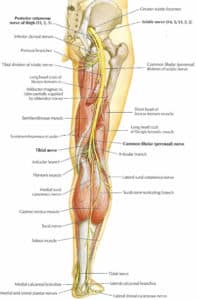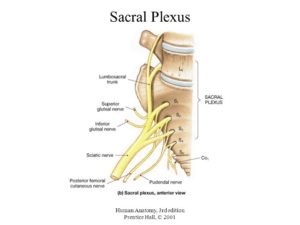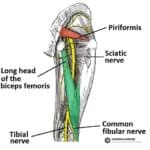The Anatomy of the Sciatic Nerve
Also known as the ischiadic nerve or ischiatic nerve, the Sciatic Nerve is the largest nerve in the human body. The Sciatic Nerve runs down the leg behind the bicep femoris and powers the thigh muscles.
The nerve begins in the Sacral Plexus
as you can see from contrasting the above depictions of the nerve. Notice the outer thigh innervation and middle leg innervation from the upper nerves in the second photo. Contrast that to the inner thigh/back-leg innervation from the lower set of nerves. The sciatic nerve is a combination of the nervous tissue from L4 to S3 and continues down the leg to branch into the Tibial Nerve and the Common Peroneal Nerve at the popliteal fossa.
The Sacral Plexus and the Greater Sciatic Foramen
Here is a fantastic depiction of the sacral plexus and the nerve’s points of joining and separation through the Greater Sciatic Foramen which is covered by the piriformis. Here is a great view of the coccyx and sacral plexus which runs down the back of the leg. As the nerve travels, it is hammocked by the piriformis and then the bicep femoris before it branches. You can see a really great example of the support of the bicep femoris below
You can also see that as the nerve travels, it branches below the bicep femoris and the popliteal fossa which is also known as the knee pit. The biggest bone in the body, the femur supports and protects the sciatic nerve. We could definitely get into more detail about the branching of the nerve, but for now, let’s stick with the major components, we can get more specialized later.
Implications for your Yoga Practice
- If you haven’t started finding ways the stretch the muscles surrounding and supporting the biggest nerve in your body, its time to start. Finding ways to relax and stretch the piriformis and strengthen the sciatic nerve should be one of the primary goals of your practice. A healthy sciatic nerve will be most helpful in maintaining a pain-free leg!
- It is necessary to work into the layers of muscles surrounding the nerve tissue to truly release tension from it. This means that although an adjustment from a chiropractor might help in the short-term, you should be focused on re-aligning the leg muscles in your daily posture to create space for the sciatic nerve.
- Your hamstrings can be the primary instigator of your back pain! Quadriceps are filthy culprits as well! Find ways to stretch your legs and your back will often carry less tension as a result. And legs stretches can allow you to stretch the back in deeper ways. There are certain points inside of your hip/sacrum connection where your back and your legs are the same thing!
- This is a huge reason why downward dog feels so fantastic. You get to stretch the muscles around your biggest nerves! Downward can be one of the most sustainable yoga poses. It shouldn’t hurt! Just uncomfortable at first.
- Just to take the downward dog thing further, this is also why sun salutations are such a universal stretches in yoga and so good for relaxing the nervous system. I think sun salutations might be one of the best exercises you can do for your back.
15 Yoga Asanas for your Sciatic Nerve
- Hero’s Pose
- Downward Dog
- Foward Fold
- Sun Salutation A
- Low Lunge
- High Lunge
- Pyramid Pose
- Warrior 1
- Eagle Pose
- Triangle Pose
- Revolved Triangle Pose
- Half-moon
- Revolved Half-moon
- Half Pigeon
- Finishing Ashtanga Streches

